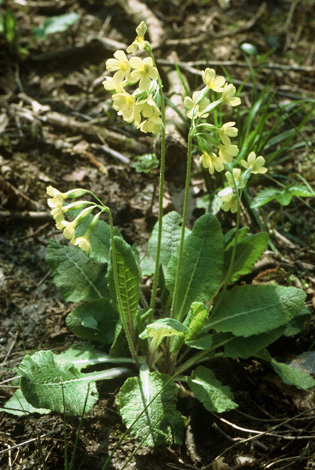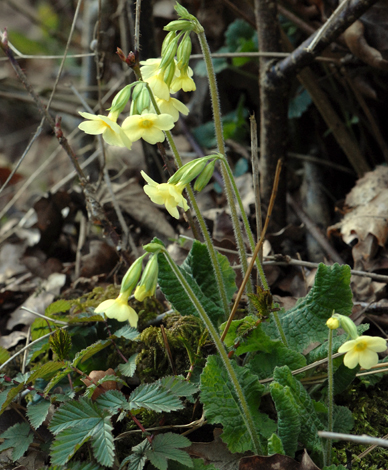Primula elatior Oxlip RR DD N


The Oxlip only grows in rather special conditions in Britain: it must have its feet in boulder clay with a good degree of moisture and its head must be in dappled shade such as that provided by ancient Birch and Oak woodland. This is exactly the habitat Waresley Wood in Cambridgeshire provides and the Oxlips thrive there in their hundreds. These exacting habitat requirements means that it only occurs naturally in a few woods in east Anglia with perhaps some outliers in Buckinghamshire. It is absent or merely escaped from gardens elsewhere in the British Isles.
The Oxlip has larger flowers than the Cowslip (P. veris) and they always produces a one-sided flower head. Stace suggests that it lives in wood more or less lacking in P vulgaris. This is a little mysterious as Waresley Wood is full of Primroses too, making the hybrid between P. elatior and P. vulgaris a regular occurrence.
Distinguishing the hybrid P. x digenea from the parents is more challenging than you might think as the hybrid can back cross with both parents to produce a plant which looks very like a P. vulgaris (Primrose) or a P. elatior (Oxlip) parent. Research by Gurney et al (Watsonia 26) shows that P. elatior cannot always be distinguished from P. x digenea hybrids in the field. However those authors do produce some useful indicators for pure Primula elatior such as short rather than long shaggy hairs on the pedicel, short pedicels and the flowers without a distinct yellow pentagon at the centre all facing the same way. These characters are satisfied more or less by the flowers in the photo but there is still a chance that either could contain a little hybrid character.
LHS: Waresley Woods, Cambridgeshire, April 1978: LHS: Waresley Woods 8th April 2010
Added on December 12th 2004, updated 22nd July 2011, updated 20th July 2023



